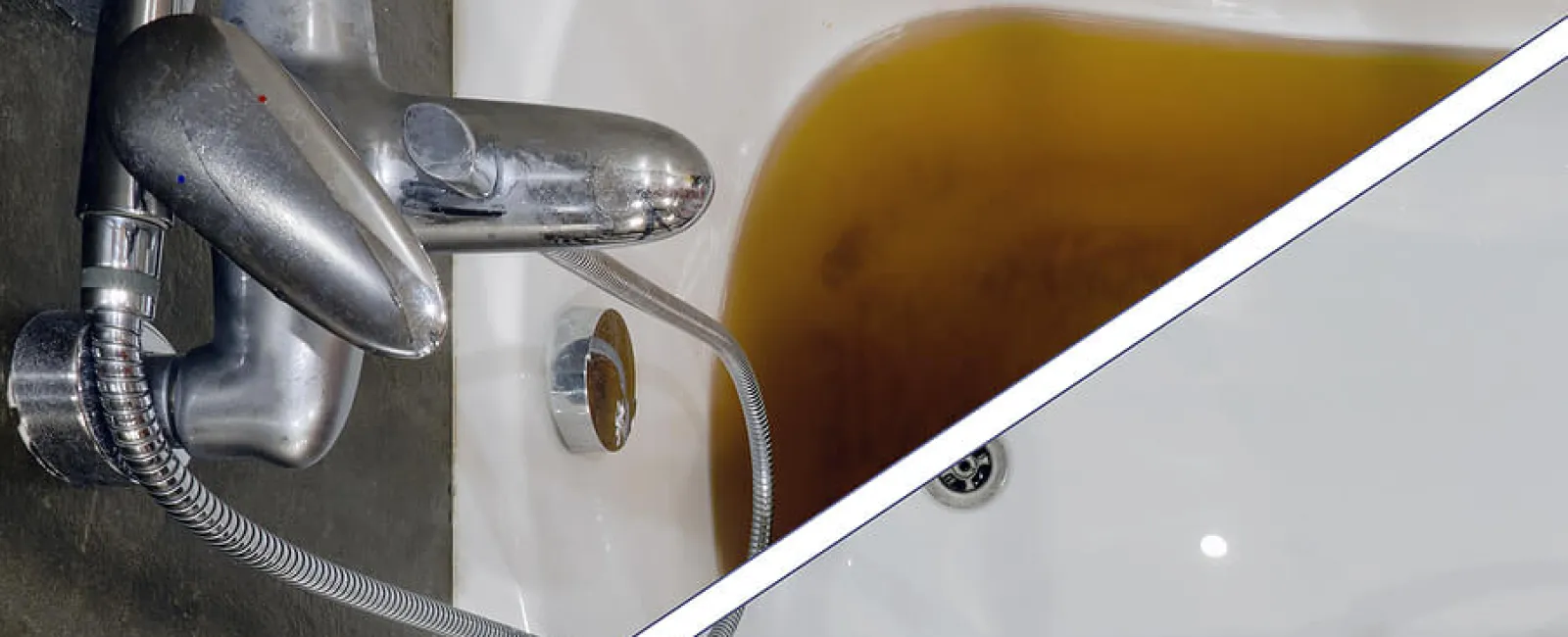An Comprehensive Guide: Effluent Rising Through the Bathtub
An Comprehensive Guide: Effluent Rising Through the Bathtub
Blog Article
What are your ideas with regards to What To Do If Sewage Starts Backing Up Into the Shower?

Sewage back-up in the bathtub can be a traumatic and unsanitary problem for any type of home owner. Not only is it bothersome, however it additionally postures major wellness dangers and indicates underlying problems with the plumbing system. Comprehending why sewer is turning up via the bath tub is important for taking appropriate activity to address the problem successfully.
Introduction to the Problem
Common Reasons for Sewage Back-up
Clogs in the Sewage System Line
Among one of the most usual causes of sewage back-up is a clog in the drain line. This can occur due to the buildup of particles, oil, or international objects in the pipelines, stopping proper flow and triggering sewage to back up right into your bathtub.
Tree Origin Intrusion
Tree origins looking for moisture and nutrients can infiltrate drain lines via small splits or joints. In time, these origins can expand and expand, creating substantial damage to the pipelines and resulting in sewage backup issues.
Comprehending the Trouble
When sewer draws back up into the tub, it's a clear indicator of a problem with the drainage system. The wastewater that should be moving away from your home is rather locating its back right into your home, which can cause considerable damages and health hazards.
Potential Causes
Numerous variables can contribute to sewage back-up in the bathtub. From obstructions in the sewer line to concerns with the plumbing infrastructure, identifying the source is crucial for finding a remedy.
Aging Framework
Older homes may have outdated plumbing systems that are more vulnerable to corrosion, fractures, and damage. As pipelines age, they end up being a lot more prone to leaks and blockages, enhancing the probability of sewer backup incidents.
Heavy Rainfall or Flooding
During periods of heavy rainfall or flooding, the drain system may come to be overwhelmed with excess water, triggering backups and overflows. This can lead to sewage supporting into bathtubs and other components inside the home.
Signs of Sewer Back-up
Foul Odors
Unpleasant smells emanating from drains pipes or fixtures, especially in the restroom, may indicate sewer backup concerns. These smells are often strong and consistent, signaling a problem that requires instant focus.
Slow Draining Fixtures
Tubs, sinks, and toilets that drain pipes slowly or not whatsoever could be experiencing sewer back-up. If multiple components are affected all at once, it's most likely that the concern originates from a typical point, such as the major sewage system line.
Gurgling Noises
Odd gurgling or gurgling noises coming from drains pipes when water is running elsewhere in the house are a measure of air caught in the plumbing system. This air buildup can result from sewage backup and should be checked out immediately.
Health And Wellness Risks Related To Sewage Backup
Contamination of Supply Of Water
Sewer backup can contaminate the water supply in your house, presenting a serious wellness risk to you and your household. Exposure to infected water can bring about gastrointestinal issues, skin infections, and other diseases.
Mold Development
Moisture from sewage backup can develop suitable problems for mold growth in your house. Mold spores can intensify respiratory system problems and create allergies in sensitive people, making punctual clean-up crucial.
Spread of Illness
Sewer consists of dangerous bacteria, viruses, and bloodsuckers that can create a variety of diseases, including liver disease, cholera, and gastroenteritis. Entering contact with sewer or infected surface areas places you in jeopardy of infection.
Tidying up After Sewage Back-up
Sanitation Procedures
Extensively decontaminate and disinfect impacted locations after sewer back-up to eliminate dangerous germs and stop mold and mildew development. Use suitable cleansing products and protective equipment to make sure safe and effective clean-up.
Repair of Impacted Locations
Fix any kind of damage to floor covering, wall surfaces, or fixtures brought on by sewer backup. Depending upon the degree of the damage, you may need to change carpeting, drywall, or other materials to restore your home to its pre-loss condition.
Immediate Actions to Take
Shutting Off Water
In the event of sewage backup, it's important to turn off the water system to stop additional contamination and damage. Situate the major water shutoff valve in your house and shut it off till the problem can be resolved.
Getting In Touch With an Expert Plumber
Taking care of sewage back-up is not a do it yourself job. Contact a certified plumber with experience in taking care of sewage-related concerns to analyze the circumstance and execute needed repairs or clean-ups.
Staying Clear Of Contact with Contaminated Water
Until the sewer back-up is resolved, prevent contact with infected water to prevent the spread of germs and pathogens. Put on protective equipment if you have to remain in the damaged area and wash your hands completely afterward.
Safety nets
Normal Maintenance of Sewer Lines
Set up regular inspections and upkeep of your sewer lines to identify and address prospective problems prior to they escalate into significant issues. This can consist of cleaning debris, examining for tree origin intrusion, and fixing any kind of damaged pipes.
Mounting Backwater Shutoffs
Take into consideration setting up bayou shutoffs in your plumbing system to stop sewer from flowing back into your home during durations of heavy rainfall or flooding. These valves instantly close when water starts backing up, protecting your residential property from contamination.
Appropriate Disposal of House Waste
Avoid flushing anything apart from bathroom tissue and human waste down the toilet to avoid blockages and obstructions in the sewer line. Dispose of grease, oil, and various other family chemicals correctly to lessen the risk of plumbing issues.
Why Is Water Backing Up in My Bathtub When I Flush My Toilet?
What to do about a sewer line clog
First, don’t bother with plunging. No amount of plunging will dislodge the clog in a sewer line. The clog is too far away. Plungers are for clogs in the toilet itself, not the sewer line. Plus, the most likely causes of a sewer clog are:
Tree roots Flushed toys or feminine products Grease buildup Those items don’t move easily. And in the case of tree roots, the roots need to be cut out of the pipe and the pipe will need to be repaired.
You’ll need a closet auger. A closet auger is a type of plumber’s snake with a protective cover to keep from scratching the delicate porcelain toilet. If the clog is further down, you may need to remove the toilet or use one of your cleanouts to get to the clog.
We also recommend doing a video inspection of the drain to ensure that the cause of the clog has been completely removed. Otherwise, you could have the same problem again in a few days or weeks.
https://mspplumbingheatingair.com/blog/why-is-water-backing-up-in-my-bathtub-when-i-flush-my-toilet

We had been made aware of that write-up on Why sewage is coming up through your bathtub from a pal on a different web blog. Those who enjoyed reading our post kindly don't forget to share it. Thanks for being here. Return soon.
Click Here
Report this page